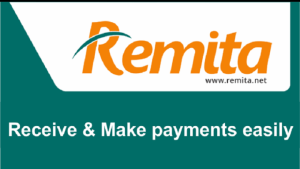REMITA: “Nigeria’s Revenue Collection System Overhaul” What Businesses Need to Know About TMRAS
The Nigerian government has announced a major shift in its revenue collection system with the launch of the Treasury Management & Revenue Assurance System (TMRAS), set to replace REMITA as the country’s official government payment platform. This transition, effective March 4, 2025, is expected to enhance transparency, streamline financial operations, and tighten fiscal controls across ministries, departments, and agencies (MDAs).
Why the Shift from REMITA to TMRAS?
For years, REMITA has served as the backbone of the Treasury Single Account (TSA), managing collections and payments for government transactions. However, with increasing calls for a more centralized, automated, and government-owned system, the Office of the Accountant General of the Federation (OAGF) has developed TMRAS as a replacement.
According to the government, TMRAS will allow better financial oversight, ensuring real-time tracking of revenue, automatic deductions of taxes (VAT, withholding tax, stamp duty), and seamless integration with Enterprise Resource Planning (ERP) systems of MDAs.
How TMRAS Will Work: Key Features for Businesses
1. Phased Implementation
Phase 1 (March 4, 2025): Covers only naira payments and collections.
Phase 2 (June 1, 2025): Expands to foreign exchange transactions and integration with ERP systems.
2. Automated Tax Deductions
Taxes on payments to vendors and contractors will be automatically deducted and remitted to the relevant accounts.
3. Internally Generated Revenue (IGR) Splitting
The system will ensure 50% automatic remittance of IGR from MDAs to the federal government, eliminating delays or manual interventions.
4. Budgetary Control & Transparency
MDAs not included in the national budget will be tracked for financial accountability.
Real-time reporting will improve visibility on government spending and revenue.

What This Means for Businesses and MDAs
1. Transition Period: Dual Operations with REMITA
From March 4 to May 4, 2025, both REMITA and TMRAS will operate simultaneously to ensure a smooth transition. However, by May 5, 2025, all government transactions are expected to be conducted exclusively on TMRAS.
2. Impact on Contractors and Vendors
Businesses dealing with MDAs should expect automated deductions on payments.
Faster remittance of deducted taxes to the Federal Inland Revenue Service (FIRS) could reduce compliance risks.
Foreign vendors may experience delays until Phase 2 (June 1, 2025) when FX transactions are fully integrated.
3. Increased Government Oversight
With enhanced monitoring tools, businesses dealing with MDAs should ensure accurate financial records and compliance to avoid penalties.
Challenges and Concerns
While the government touts TMRAS as a game-changer, some industry players have raised concerns, including:
Potential teething issues during implementation.
Effect on private tech companies that previously played a role in TSA revenue collection.
Transparency of system management, as TMRAS is entirely government-owned.
Final Thoughts
The transition from REMITA to TMRAS marks a significant shift in Nigeria’s public finance system. While businesses must brace for changes in payment processing and tax deductions, the long-term goal is improved efficiency, transparency, and fiscal discipline.
As the government rolls out Phase 1, businesses and MDAs should closely monitor the transition, seek necessary clarifications, and prepare for the full migration by May 2025.


